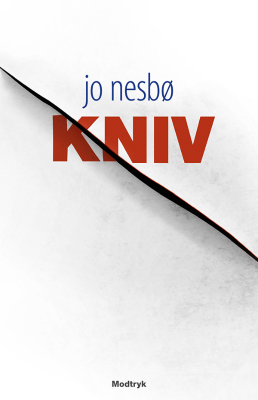
The Nonlinear Library: Alignment Forum
engelsk
Videnskab & teknologi
Begrænset tilbud
1 måned kun 9 kr.
Derefter 99 kr. / månedOpsig når som helst.
- 20 lydbogstimer pr. måned
- Podcasts kun på Podimo
- Gratis podcasts
Læs mere The Nonlinear Library: Alignment Forum
The Nonlinear Library allows you to easily listen to top EA and rationalist content on your podcast player. We use text-to-speech software to create an automatically updating repository of audio content from the EA Forum, Alignment Forum, LessWrong, and other EA blogs. To find out more, please visit us at nonlinear.org
Alle episoder
384 episoderAF - The Obliqueness Thesis by Jessica Taylor
Link to original article [https://www.alignmentforum.org/posts/vdATCfuxdtdqM2wh9/the-obliqueness-thesis] Welcome to The Nonlinear Library, where we use Text-to-Speech software to convert the best writing from the Rationalist and EA communities into audio. This is: The Obliqueness Thesis, published by Jessica Taylor on September 19, 2024 on The AI Alignment Forum. In my Xenosystems review, I discussed the Orthogonality Thesis, concluding that it was a bad metaphor. It's a long post, though, and the comments on orthogonality build on other Xenosystems content. Therefore, I think it may be helpful to present a more concentrated discussion on Orthogonality, contrasting Orthogonality with my own view, without introducing dependencies on Land's views. (Land gets credit for inspiring many of these thoughts, of course, but I'm presenting my views as my own here.) First, let's define the Orthogonality Thesis. Quoting Superintelligence for Bostrom's formulation: Intelligence and final goals are orthogonal: more or less any level of intelligence could in principle be combined with more or less any final goal. To me, the main ambiguity about what this is saying is the "could in principle" part; maybe, for any level of intelligence and any final goal, there exists (in the mathematical sense) an agent combining those, but some combinations are much more natural and statistically likely than others. Let's consider Yudkowsky's formulations as alternatives. Quoting Arbital: The Orthogonality Thesis asserts that there can exist arbitrarily intelligent agents pursuing any kind of goal. The strong form of the Orthogonality Thesis says that there's no extra difficulty or complication in the existence of an intelligent agent that pursues a goal, above and beyond the computational tractability of that goal. As an example of the computational tractability consideration, sufficiently complex goals may only be well-represented by sufficiently intelligent agents. "Complication" may be reflected in, for example, code complexity; to my mind, the strong form implies that the code complexity of an agent with a given level of intelligence and goals is approximately the code complexity of the intelligence plus the code complexity of the goal specification, plus a constant. Code complexity would influence statistical likelihood for the usual Kolmogorov/Solomonoff reasons, of course. I think, overall, it is more productive to examine Yudkowsky's formulation than Bostrom's, as he has already helpfully factored the thesis into weak and strong forms. Therefore, by criticizing Yudkowsky's formulations, I am less likely to be criticizing a strawman. I will use "Weak Orthogonality" to refer to Yudkowsky's "Orthogonality Thesis" and "Strong Orthogonality" to refer to Yudkowsky's "strong form of the Orthogonality Thesis". Land, alternatively, describes a "diagonal" between intelligence and goals as an alternative to orthogonality, but I don't see a specific formulation of a "Diagonality Thesis" on his part. Here's a possible formulation: Diagonality Thesis: Final goals tend to converge to a point as intelligence increases. The main criticism of this thesis is that formulations of ideal agency, in the form of Bayesianism and VNM utility, leave open free parameters, e.g. priors over un-testable propositions, and the utility function. Since I expect few readers to accept the Diagonality Thesis, I will not concentrate on criticizing it. What about my own view? I like Tsvi's naming of it as an "obliqueness thesis". Obliqueness Thesis: The Diagonality Thesis and the Strong Orthogonality Thesis are false. Agents do not tend to factorize into an Orthogonal value-like component and a Diagonal belief-like component; rather, there are Oblique components that do not factorize neatly. (Here, by Orthogonal I mean basically independent of intelligence, and by Diagonal I mean converging to a point in the limit of intelligence.) While I will address Yudkowsky's arguments for the Orthogonality Thesis, I think arguing directly for my view first will be more helpful. In general, it seems ...
AF - Secret Collusion: Will We Know When to Unplug AI? by schroederdewitt
Link to original article [https://www.alignmentforum.org/posts/smMdYezaC8vuiLjCf/secret-collusion-will-we-know-when-to-unplug-ai] Welcome to The Nonlinear Library, where we use Text-to-Speech software to convert the best writing from the Rationalist and EA communities into audio. This is: Secret Collusion: Will We Know When to Unplug AI?, published by schroederdewitt on September 16, 2024 on The AI Alignment Forum. TL;DR: We introduce the first comprehensive theoretical framework for understanding and mitigating secret collusion among advanced AI agents, along with CASE, a novel model evaluation framework. CASE assesses the cryptographic and steganographic capabilities of agents, while exploring the emergence of secret collusion in real-world-like multi-agent settings. Whereas current AI models aren't yet proficient in advanced steganography, our findings show rapid improvements in individual and collective model capabilities, posing unprecedented safety and security risks. These results highlight urgent challenges for AI governance and policy, urging institutions such as the EU AI Office and AI safety bodies in the UK and US to prioritize cryptographic and steganographic evaluations of frontier models. Our research also opens up critical new pathways for research within the AI Control framework. Philanthropist and former Google CEO Eric Schmidt said in 2023 at a Harvard event: "[...] the computers are going to start talking to each other probably in a language that we can't understand and collectively their super intelligence - that's the term we use in the industry - is going to rise very rapidly and my retort to that is: do you know what we're going to do in that scenario? We're going to unplug them [...] But what if we cannot unplug them in time because we won't be able to detect the moment when this happens? In this blog post, we, for the first time, provide a comprehensive overview of the phenomenon of secret collusion among AI agents, connect it to foundational concepts in steganography, information theory, distributed systems theory, and computability, and present a model evaluation framework and empirical results as a foundation of future frontier model evaluations. This blog post summarises a large body of work. First of all, it contains our pre-print from February 2024 (updated in September 2024) "Secret Collusion among Generative AI Agents". An early form of this pre-print was presented at the 2023 New Orleans (NOLA) Alignment Workshop (see this recording NOLA 2023 Alignment Forum Talk Secret Collusion Among Generative AI Agents: a Model Evaluation Framework). Also, check out this long-form Foresight Institute Talk). In addition to these prior works, we also include new results. These contain empirical studies on the impact of paraphrasing as a mitigation tool against steganographic communications, as well as reflections on our findings' impact on AI Control. Multi-Agent Safety and Security in the Age of Autonomous Internet Agents The near future could see myriads of LLM-driven AI agents roam the internet, whether on social media platforms, eCommerce marketplaces, or blockchains. Given advances in predictive capabilities, these agents are likely to engage in increasingly complex intentional and unintentional interactions, ranging from traditional distributed systems pathologies (think dreaded deadlocks!) to more complex coordinated feedback loops. Such a scenario induces a variety of multi-agent safety, and specifically, multi-agent security[1] (see our NeurIPS'23 workshop Multi-Agent Security: Security as Key to AI Safety) concerns related to data exfiltration, multi-agent deception, and, fundamentally, undermining trust in AI systems. There are several real-world scenarios where agents could have access to sensitive information, such as their principals' preferences, which they may disclose unsafely even if they are safety-aligned when considered in isolation. Stray incentives, intentional or otherwise, or more broadly, optimization pressures, could cause agents to interact in undesirable and potentially dangerous ways. For example, join...
AF - Estimating Tail Risk in Neural Networks by Jacob Hilton
Link to original article [https://www.alignmentforum.org/posts/xj5nzResmDZDqLuLo/estimating-tail-risk-in-neural-networks] Welcome to The Nonlinear Library, where we use Text-to-Speech software to convert the best writing from the Rationalist and EA communities into audio. This is: Estimating Tail Risk in Neural Networks, published by Jacob Hilton on September 13, 2024 on The AI Alignment Forum. Machine learning systems are typically trained to maximize average-case performance. However, this method of training can fail to meaningfully control the probability of tail events that might cause significant harm. For instance, while an artificial intelligence (AI) assistant may be generally safe, it would be catastrophic if it ever suggested an action that resulted in unnecessary large-scale harm. Current techniques for estimating the probability of tail events are based on finding inputs on which an AI behaves catastrophically. Since the input space is so large, it might be prohibitive to search through it thoroughly enough to detect all potential catastrophic behavior. As a result, these techniques cannot be used to produce AI systems that we are confident will never behave catastrophically. We are excited about techniques to estimate the probability of tail events that do not rely on finding inputs on which an AI behaves badly, and can thus detect a broader range of catastrophic behavior. We think developing such techniques is an exciting problem to work on to reduce the risk posed by advanced AI systems: Estimating tail risk is a conceptually straightforward problem with relatively objective success criteria; we are predicting something mathematically well-defined, unlike instances of eliciting latent knowledge (ELK) where we are predicting an informal concept like "diamond". Improved methods for estimating tail risk could reduce risk from a variety of sources, including central misalignment risks like deceptive alignment. Improvements to current methods can be found both by doing empirical research, or by thinking about the problem from a theoretical angle. This document will discuss the problem of estimating the probability of tail events and explore estimation strategies that do not rely on finding inputs on which an AI behaves badly. In particular, we will: Introduce a toy scenario about an AI engineering assistant for which we want to estimate the probability of a catastrophic tail event. Explain some deficiencies of adversarial training, the most common method for reducing risk in contemporary AI systems. Discuss deceptive alignment as a particularly dangerous case in which adversarial training might fail. Present methods for estimating the probability of tail events in neural network behavior that do not rely on evaluating behavior on concrete inputs. Conclude with a discussion of why we are excited about work aimed at improving estimates of the probability of tail events. This document describes joint research done with Jacob Hilton, Victor Lecomte, David Matolcsi, Eric Neyman, Thomas Read, George Robinson, and Gabe Wu. Thanks additionally to Ajeya Cotra, Lukas Finnveden, and Erik Jenner for helpful comments and suggestions. A Toy Scenario Consider a powerful AI engineering assistant. Write M for this AI system, and M(x) for the action it suggests given some project description x. We want to use this system to help with various engineering projects, but would like it to never suggest an action that results in large-scale harm, e.g. creating a doomsday device. In general, we define a behavior as catastrophic if it must never occur in the real world.[1] An input is catastrophic if it would lead to catastrophic behavior. Assume we can construct a catastrophe detector C that tells us if an action M(x) will result in large-scale harm. For the purposes of this example, we will assume both that C has a reasonable chance of catching all catastrophes and that it is feasible to find a useful engineering assistant M that never triggers C (see Catastrophe Detectors for further discussion). We will also assume we can use C to train M, but that it is ...
AF - Can startups be impactful in AI safety? by Esben Kran
Link to original article [https://www.alignmentforum.org/posts/Mf7wcRDoMAzbECfCw/can-startups-be-impactful-in-ai-safety] Welcome to The Nonlinear Library, where we use Text-to-Speech software to convert the best writing from the Rationalist and EA communities into audio. This is: Can startups be impactful in AI safety?, published by Esben Kran on September 13, 2024 on The AI Alignment Forum. With Lakera's strides in securing LLM APIs, Goodfire AI's path to scaling interpretability, and 20+ model evaluations startups among much else, there's a rising number of technical startups attempting to secure the model ecosystem. Of course, they have varying levels of impact on superintelligence containment and security and even with these companies, there's a lot of potential for aligned, ambitious and high-impact startups within the ecosystem. This point isn't new and has been made in our previous posts and by Eric Ho (Goodfire AI CEO). To set the stage, our belief is that these are the types of companies that will have a positive impact: Startups with a profit incentive completely aligned with improving AI safety; that have a deep technical background to shape AGI deployment and; do not try to compete with AGI labs. Piloting AI safety startups To understand impactful technical AI safety startups better, Apart Research joined forces with collaborators from Juniper Ventures, vectorview (alumni from the latest YC cohort), Rudolf (from the upcoming def/acc cohort), Tangentic AI, and others. We then invited researchers, engineers, and students to resolve a key question "can we come up with ideas that scale AI safety into impactful for-profits?" The hackathon took place during a weekend two weeks ago with a keynote by Esben Kran (co-director of Apart) along with 'HackTalks' by Rudolf Laine (def/acc) and Lukas Petersson (YC / vectorview). Individual submissions were a 4 page report with the problem statement, why this solution will work, what the key risks of said solution are, and any experiments or demonstrations of the solution the team made. This post details the top 6 projects and excludes 2 projects that were made private by request (hopefully turning into impactful startups now!). In total, we had 101 signups and 11 final entries. Winners were decided by an LME model conditioned on reviewer bias. Watch the authors' lightning talks here. Dark Forest: Making the web more trustworthy with third-party content verification By Mustafa Yasir (AI for Cyber Defense Research Centre, Alan Turing Institute) Abstract: 'DarkForest is a pioneering Human Content Verification System (HCVS) designed to safeguard the authenticity of online spaces in the face of increasing AI-generated content. By leveraging graph-based reinforcement learning and blockchain technology, DarkForest proposes a novel approach to safeguarding the authentic and humane web. We aim to become the vanguard in the arms race between AI-generated content and human-centric online spaces.' Content verification workflow supported by graph-based RL agents deciding verifications Reviewer comments: Natalia: Well explained problem with clear need addressed. I love that you included the content creation process - although you don't explicitly address how you would attract content creators to use your platform over others in their process. Perhaps exploring what features of platforms drive creators to each might help you make a compelling case for using yours beyond the verification capabilities. I would have also liked to see more details on how the verification decision is made and how accurate this is on existing datasets. Nick: There's a lot of valuable stuff in here regarding content moderation and identity verification. I'd narrow it to one problem-solution pair (e.g., "jobs to be done") and focus more on risks around early product validation (deep interviews with a range of potential users and buyers regarding value) and go-to-market. It might also be worth checking out Musubi. Read the full project here. Simulation Operators: An annotation operation for alignment of robot By Ardy Haroen (USC) Abstrac...
AF - How difficult is AI Alignment? by Samuel Dylan Martin
Link to original article [https://www.alignmentforum.org/posts/Wz42Ae2dQPdpYus98/how-difficult-is-ai-alignment] Welcome to The Nonlinear Library, where we use Text-to-Speech software to convert the best writing from the Rationalist and EA communities into audio. This is: How difficult is AI Alignment?, published by Samuel Dylan Martin on September 13, 2024 on The AI Alignment Forum. This work was funded by Polaris Ventures There is currently no consensus on how difficult the AI alignment problem is. We have yet to encounter any real-world, in the wild instances of the most concerning threat models, like deceptive misalignment. However, there are compelling theoretical arguments which suggest these failures will arise eventually. Will current alignment methods accidentally train deceptive, power-seeking AIs that appear aligned, or not? We must make decisions about which techniques to avoid and which are safe despite not having a clear answer to this question. To this end, a year ago, we introduced the AI alignment difficulty scale, a framework for understanding the increasing challenges of aligning artificial intelligence systems with human values. This follow-up article revisits our original scale, exploring how our understanding of alignment difficulty has evolved and what new insights we've gained. This article will explore three main themes that have emerged as central to our understanding: 1. The Escalation of Alignment Challenges: We'll examine how alignment difficulties increase as we go up the scale, from simple reward hacking to complex scenarios involving deception and gradient hacking. Through concrete examples, we'll illustrate these shifting challenges and why they demand increasingly advanced solutions. These examples will illustrate what observations we should expect to see "in the wild" at different levels, which might change our minds about how easy or difficult alignment is. 2. Dynamics Across the Difficulty Spectrum: We'll explore the factors that change as we progress up the scale, including the increasing difficulty of verifying alignment, the growing disconnect between alignment and capabilities research, and the critical question of which research efforts are net positive or negative in light of these challenges. 3. Defining and Measuring Alignment Difficulty: We'll tackle the complex task of precisely defining "alignment difficulty," breaking down the technical, practical, and other factors that contribute to the alignment problem. This analysis will help us better understand the nature of the problem we're trying to solve and what factors contribute to it. The Scale The high level of the alignment problem, provided in the previous post, was: "The alignment problem" is the problem of aligning sufficiently powerful AI systems, such that we can be confident they will be able to reduce the risks posed by misused or unaligned AI systems We previously introduced the AI alignment difficulty scale, with 10 levels that map out the increasing challenges. The scale ranges from "alignment by default" to theoretical impossibility, with each level representing more complex scenarios requiring more advanced solutions. It is reproduced here: Alignment Difficulty Scale Difficulty Level Alignment technique X is sufficient Description Key Sources of risk 1 (Strong) Alignment by Default As we scale up AI models without instructing or training them for specific risky behaviour or imposing problematic and clearly bad goals (like 'unconditionally make money'), they do not pose significant risks. Even superhuman systems basically do the commonsense version of what external rewards (if RL) or language instructions (if LLM) imply. Misuse and/or recklessness with training objectives. RL of powerful models towards badly specified or antisocial objectives is still possible, including accidentally through poor oversight, recklessness or structural factors. 2 Reinforcement Learning from Human Feedback We need to ensure that the AI behaves well even in edge cases by guiding it more carefully using human feedback in a wide range of situations...
Vælg dit abonnement
Begrænset tilbud
Premium
20 timers lydbøger
Podcasts kun på Podimo
Gratis podcasts
Opsig når som helst
1 måned kun 9 kr.
Derefter 99 kr. / måned
Premium Plus
100 timers lydbøger
Podcasts kun på Podimo
Gratis podcasts
Opsig når som helst
Prøv gratis i 7 dage
Derefter 129 kr. / month
1 måned kun 9 kr. Derefter 99 kr. / måned. Opsig når som helst.

































